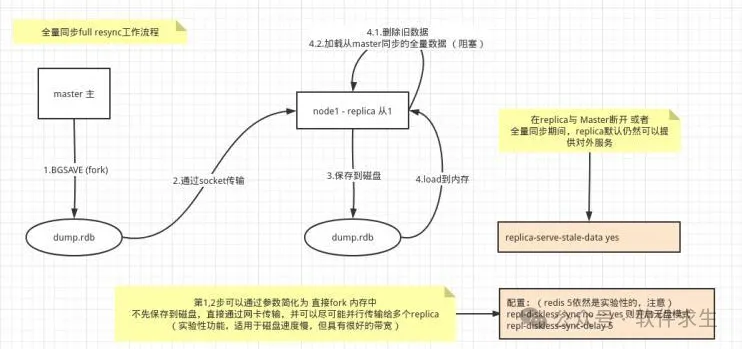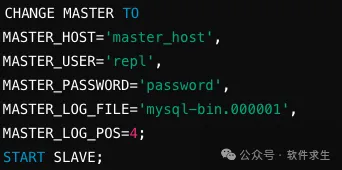The secret of active/standby switching: the secret to ensuring that the system never stops

I. Introduction
Hello, everyone! I am Xiaomi, a lively and active person who loves to share technology. Today we are going to talk about a very important topic: master-slave switching in distributed partition fault tolerance. Whether you are an experienced developer or a beginner, this article will unveil the mystery of distributed systems and give you a deep understanding of the key technologies involved. Let's get started!
2. What is distributed partition fault tolerance?
In modern distributed systems, in order to ensure high availability and reliability of the system, we often use a master-slave switching mechanism. When the host (primary node) fails, the backup machine (backup node) can quickly take over the work to ensure service continuity. When the host returns to normal, the system will automatically or manually switch the service back to the host. This is what we often call hot standby and cold standby.
3. Hot Standby and Cold Standby
Hot Standby: The standby machine takes over the work of the main machine in real time without manual intervention. This method has a fast switching speed and is often used in systems with high requirements for service continuity.
Cold Standby: After the main machine fails, the standby machine needs manual intervention to switch. Although this method has a slow response speed, it is also an effective solution in some scenarios.
4. Master-slave replication in MySQL
 picture
picture
In MySQL, the common method to achieve master-slave switching is master-slave replication. The basis of master-slave replication is binary log file. So, what is binary log file?
Binary Log File
The binary log file is an important file for MySQL to record database operations. It records all operations in the database and saves them in the form of "events". Through these events, we can achieve database replication and recovery.
How Master-Slave Replication Works
- The master server (Master) records binary logs: All operations on the master server are recorded in the binary log.
- Slave server communicates with the master server: The slave server communicates with the master server through an I/O thread and monitors changes in binary log files.
- Copy binary log: When the I/O thread finds that the binary log file has changed, it copies the changes to the relay log of the slave server.
- Execute log events: The SQL thread of the slave server will execute the "events" in the relay log into its own database to maintain consistency with the master database.
This mechanism ensures that even if the master server fails, the slave server can quickly take over the work and maintain data consistency and service continuity.
5. Master-slave replication in Redis
In addition to MySQL, Redis is also one of our commonly used databases. Redis also supports master-slave replication mechanism to ensure high availability of data.
 picture
picture
Redis's master-slave replication is somewhat different from MySQL, but the core idea is the same. Redis achieves data replication and fault tolerance through the synchronization mechanism between the master server and the slave server.
- Initialization synchronization: When the slave server connects to the master server, it sends a synchronization request. The master server sends a data snapshot to the slave server. After the slave server loads the data, it starts to receive new operations.
- Incremental synchronization: After loading the data snapshot from the server, it will continue to receive new operations from the master server to ensure data consistency.
Redis's master-slave replication mechanism is very efficient and can complete data synchronization in a short time to ensure high availability of the service.
6. Practical Application of Active/Standby Switching
After understanding the principles of master-slave replication, let's look at some cases in practical applications.
Case 1: E-commerce website
In a large e-commerce website, high availability of the database is crucial. We can use MySQL's master-slave replication mechanism, where the master server is responsible for processing user orders and queries, and the slave server is used as a backup. Once the master server fails, the slave server can immediately take over to ensure that the user experience is not affected.
Case 2: Social Media Platforms
In social media platforms, Redis is often used for caching and session management. To ensure high availability of the system, we can configure Redis master-slave replication, with the master server processing real-time data and the slave server as a backup. When the master server fails, the slave server can quickly take over to ensure that user data is not lost.
7. MySQL master-slave replication configuration
Configuring the Master Server
Add the following to the master server's configuration file (my.cnf):
 picture
picture
Then restart the MySQL service.
Create a replication user
 picture
picture
Get the binary log file name and position
 picture
picture
Configuring the slave server
Add the following to the slave server's configuration file (my.cnf):
 picture
picture
Then restart the MySQL service.
Setting up replication
 picture
picture
Checking the replication status
 picture
picture
8. Redis master-slave replication configuration
Configuring the Master Server
Set in the main server's configuration file (redis.conf):
 picture
picture
Configuring the slave server
Set in the slave server's configuration file (redis.conf):
 picture
picture
Then restart the Redis service.
IX. Challenges and Solutions of Active/Standby Switching
Although the active-standby switching mechanism can improve the high availability of the system, it also faces some challenges in practical applications.
Challenge 1: Data consistency
How to ensure data consistency during the active/standby switchover is a key issue. To solve this problem, we can adopt the following solutions:
- Synchronous replication: ensures that the data of the master server and the slave server are synchronized in real time to avoid data inconsistency.
- Read-write separation: Distribute read operations to multiple slave servers to reduce the load on the master server and improve system performance.
Challenge 2: Switching Delay
During the active/standby switchover process, there may be a brief service interruption. To solve this problem, we can use the following solutions:
- Preheating mechanism: Before switching, preload the data of the standby machine to reduce the switching time.
- Health check: Regularly check the health status of the master server and slave servers to detect and handle faults in a timely manner.
END
Through this article, we have introduced in detail the master-slave switching mechanism in distributed partition fault tolerance, focusing on the master-slave replication principle and implementation method in MySQL and Redis. I hope that these contents will be helpful to everyone and enable us to better cope with the challenges of high availability and fault tolerance in actual development.